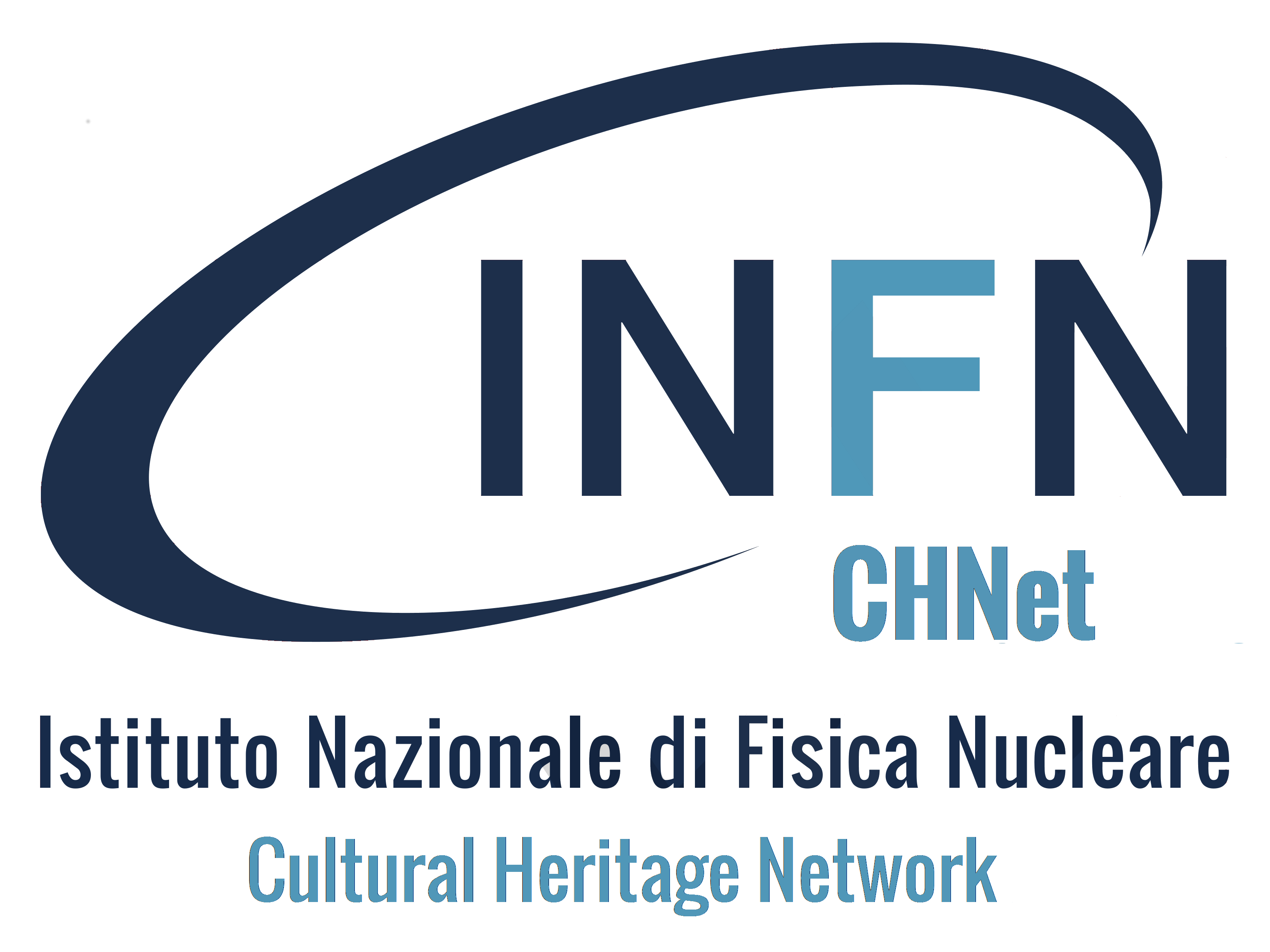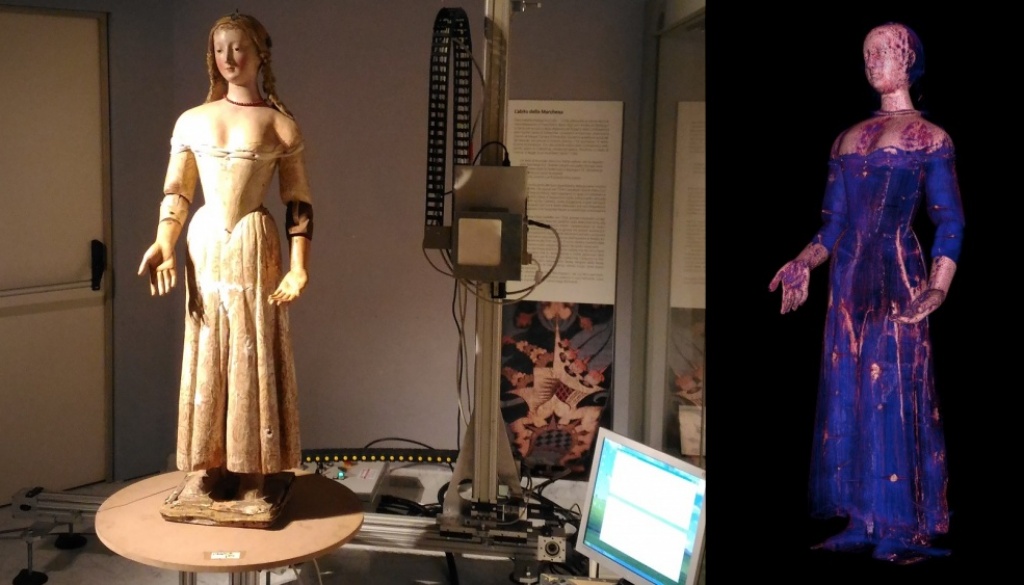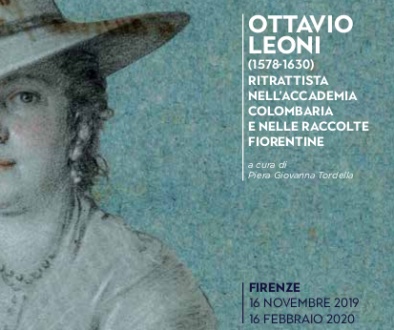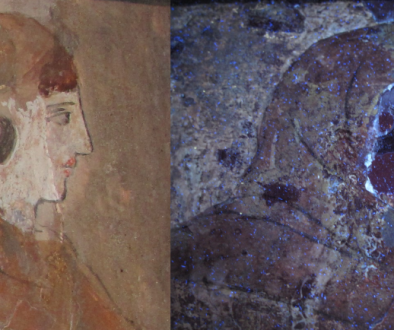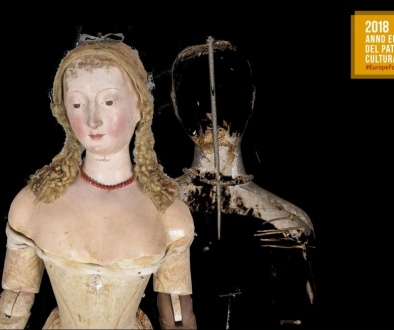Computed X-ray Tomography Scanning Campaign at the Diocesan Museum of Massa
The researchers of CHNnet performed an extensive on site measurement campaign on some of the most important statues conserved at the Diocesan Museum in Massa, in the framework of the project STA.VE. (Statue Vestite polimateriche) of the Dipartimento di Civiltà e Forme del Sapere, University of Pisa (scientific manager Antonella Gioli). The complete X-ray compute tomography (CT) scanning of the entire statues was possible thanks to the work of development of a new CT systems dedicated to cultural heritage by the researchers of INFN Section of Bologna in collaboration with the Department of Physics and Astronomy of the University. By means of a transportable X-ray tomography system mounted in the halls of the museum -closed to the public for the occasion- and thanks to this wide field of view device the complete scanning of a number of statues, some of which have almost natural size, was possible. This analysis will reveal the complex nature and the conservation state of the works of art, and it will enhance, thanks to the high resolution reached, different aspects concerning past restoration interventions and changes occurred over time as well as the construction techniques used by authors. Three-dimensional Computed Tomography analysis remains an essential tool for morphologic analysis of works of art and can confirm statements and hypothesis made by restorers and conservators but also unveil new details and hidden features. A huge amount of data has been collected in the present measurement campaign, pushing to the limit the scanning capabilities of the system for over 13 hours scanning and 200GB of radiographic digital images. Researchers in Bologna are at the moment processing this considerable amount of digital data on multi-cores processor PCs to obtain tomographic sections. The aim is to have finally a three-dimensional rendering of the complete works of art on a workstation in order to show results of the analysis to art historians and restorers who proposed the project STAVE, the study of religious statues made partly with a typical local matter called Lucca’s plaster. The project has been selected as one of the winners of the Italian call of the European infrastructure E-RIHS.
